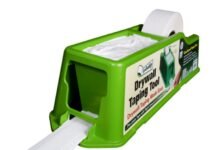Two of the most common forms of interior wall materials are plaster and drywall.

By Meg Padgett Long Beach – See more Home Design Photos
Drywall (plasterboard or gypsum board), is a panel made of gypsum plaster pressed between two thick sheets of paper. It is used to make interior walls and ceilings.
On the other hand plaster is a building material similar to mortar or cement. It is a dry powder and when it is mixed with water to form a past, liberates heats and then hardens.
Plaster is much older than drywall, but both have evolved over the years. Plaster has been used since ancient times. The earliest plaster was usually made of lime, sand, animal hair and water. We can find plaster in the Ancient Egypt and also ancient roman homes are known to have been decorated artwork made of plaster.
The new alternative to lime-based plasters was gypsum-based plaster. Gypsum-based plasters had a faster drying time and that it could speed the building construction. Due to the number of coats and lathing, a plaster wall tends to be thicker than a drywall wall, which can create a greater air barrier.
Plaster could be treated in any number of ways: it could receive stenciling, decorative painting, wallpaper, or whitewash. This variety and the adaptability of the material to nearly any building size, shape, or configuration meant that plaster was the wall surface chosen for nearly all buildings until the 1930s or 40s. Three-coat plaster is very strength and durable and also can resists fire and is sound proof. However plaster is less common than drywall, it requires more labor and cost but it has a much stronger finish. Somehow when it comes to repairs using plaster is maybe, a better alternative (less expensive) than replacing entire walls. But if you want to create new walls the most modern plaster system is “Veneer Plaster” called blue board.
There are obvious advantages to drywall over plaster. Drywall is more common, faster to install, less expensive, less labor. Installing drywall is a fairly quick process compared to that of plastering but however, in our days is a shortage of skilled plasterer labors. The most common drywall is wall-board and is available in ½” or 5/8” thickness. Drywall is cheaper than plaster but there are many factors which influence the costs. Drywall also helps to reduce noise along with having fire-resistant properties due to the water in the boards.
But drywall can have also some disadvantages as:
a) Drywall can be damaged by the settling of the building or homeowner accidents.
b) Nails or screws can pop, when the head of these fasteners creates a bulge or becomes visible through the drywall.
c) Common drywall is susceptible to water damage if exposed to elevated levels of moisture over long periods of time (mold problems). To decrease the chance for mold, new gypsum drywall boards are going paperless.
Knowing about the advantages and disadvantages of both plaster and drywall help you to choose the best system for your home construction.
Removing Sticky Duct Tape Residue from Your Stuff (howtobuildahouseblog.com)


